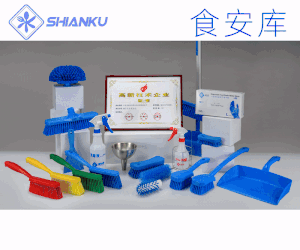近日,華中農(nóng)業(yè)大學(xué)資源與環(huán)境學(xué)院植物營(yíng)養(yǎng)生物學(xué)課題組聯(lián)合中國農(nóng)業(yè)大學(xué)在油菜適應(yīng)緊實(shí)土壤脅迫適應(yīng)性機(jī)制研究中取得新進(jìn)展,相關(guān)成果以“Compacted soil adaptability of Brassica napus driven by root mechanical traits”為題發(fā)表在Soil & Tillage Research上。
由機(jī)械化耕作、土壤干旱、長(zhǎng)期免耕和農(nóng)業(yè)集約化生產(chǎn)等造成的土壤壓實(shí)會(huì)嚴(yán)重破壞土壤結(jié)構(gòu),同時(shí)顯著阻礙作物生長(zhǎng)和產(chǎn)量提高,但目前學(xué)術(shù)界對(duì)土壤壓實(shí)如何影響植物功能和生態(tài)策略仍不清楚?;诖吮尘埃n題組以我國重要油料作物—甘藍(lán)型油菜為研究對(duì)象,探究具有不同機(jī)械特征的油菜品種如何影響土壤緊實(shí)脅迫適應(yīng)性、根系性狀之間的權(quán)衡和養(yǎng)分獲取能力,以及不同油菜品種的基因型響應(yīng)特征。
結(jié)果表明,土壤壓實(shí)顯著抑制了根系下扎深度和根系生長(zhǎng),降低養(yǎng)分吸收和植物生物量累積。然而,土壤壓實(shí)顯著促進(jìn)甘藍(lán)型油菜根系平均直徑和根冠比增加。在緊實(shí)土壤中,具有較強(qiáng)根系力學(xué)性質(zhì)(根系拉力、抗拉強(qiáng)度和彈性模量)的甘藍(lán)型油菜品種根系具有較高濃度的纖維素和木質(zhì)素,且具有顯著較大的根系下扎深度和比根長(zhǎng),同時(shí)根系分泌顯著較多的有機(jī)酸和多糖類物質(zhì)。土壤壓實(shí)導(dǎo)致土壤中具有較多的小孔隙,根-土界面分布較多的細(xì)根促進(jìn)根系下扎,同時(shí)誘導(dǎo)產(chǎn)生較多根系分泌物(有機(jī)酸和糖類物質(zhì))在根系下扎中起潤(rùn)滑作用,促進(jìn)根系形態(tài)的建立和生物量累積。因此,較強(qiáng)根系力學(xué)性質(zhì)的甘藍(lán)型油菜品種中更多的細(xì)根和根系分泌較多的有機(jī)酸和糖類物質(zhì),對(duì)甘藍(lán)型油菜根系在壓實(shí)土壤中的下扎至關(guān)重要。
我校博士研究生段賢杰為論文第一作者,石磊教授和中國農(nóng)業(yè)大學(xué)金可默副教授為共同通訊作者。我校博士生劉玲、何陽波副教授、徐芳森教授,法國農(nóng)學(xué)院毛準(zhǔn)研究員、中國農(nóng)科院西雙版納熱帶植物園夏尚文副研究員、英國雷丁大學(xué)John P. Hammond教授和英國詹姆斯?赫頓研究所Philip J. White教授也參與了該項(xiàng)研究。該研究得到了國家自然科學(xué)基金和蘇格蘭政府戰(zhàn)略研究計(jì)劃等項(xiàng)目的支持。
【英文摘要】
Soil compaction due to mechanized farming operations is a recurrent issue affecting crop growth and yield. Yet, how soil compaction affects plant functions and ecological strategies is poorly known. With Brassica napus, i.e. a widespread crop species as study object, we aim to understand (i) how soil compaction impacts root and shoot traits related to the plant's well-being, nutrient acquisition of Brassica napus with different mechanical robustness, as well as their trade-offs, and (ii) how such impacts vary among different cultivars. To do this, we cultivated six cultivars of Brassica napus in non-compacted (control) and compacted (treatment) soils, respectively, in a sand culture system. After harvesting, a series of mechanical, morphological and chemical traits of roots and/or shoots were measured. Results showed that soil compaction significantly limited root penetration depth and root system establishment in morphological traits, leading further to significant reduction in nutrients acquisition and plant biomass accumulation. However, soil compaction significantly increases the average root diameter and root/shoot ratio, and facilitate more root exudates secretion (e.g. organic acids and polysaccharides) of Brassica napus cultivars. The Brassica napus cultivars with large root mechanical traits (e.g. root tensile force, root tensile strength and modulus of elasticity) had higher root cellulose and lignin concentrations and showed a stronger response in maximum root depth and specific root length compared with Brassica napuscultivars with small root mechanical traits in compacted treatment, which resulted in the greater fine root length and more root exudates secretion at root-soil interface. Furthermore, deep rooting enhanced nutrients acquisition and further biomass accumulation in compacted soil. Totally, the Brassica napus cultivars with large root mechanical traits with more fine roots and root exudates were critical for Brassica napusroot penetration into a deep soil layer in compacted soil.
論文鏈接:https://doi.org/10.1016/j.still.2023.105785











 地區(qū):
地區(qū):






 魯公網(wǎng)安備 37060202000128號(hào)
魯公網(wǎng)安備 37060202000128號(hào)



